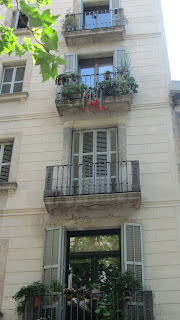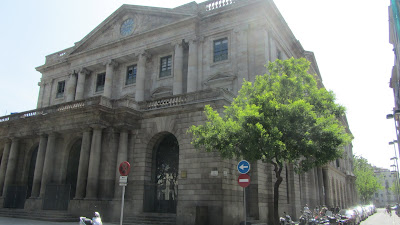Azulgranas se juegan el título
A big game for Barcelona took place last night. Not only was it a very important victory for the team, but it was a very important victory for the city of Barcelona, and for all of Catalunya. Barcelona played Real Madrid in the first game of the Champions League last night and walked away the victors in a two to nothing win.
This match is more than just a soccer game. It is a large rivalry that goes farther than just soccer. There is a constant battle, social and political, between Madrid and Catalunya. This match represents it all. The fight between central power in Madrid, and nationalism in Catalunya is a constant fight back and forth, and this important game is a powerful representation of a win for Catalunya and Catalan pride. Hopefully, they can keep up their lead, and beat Madrid in the next game.
The bar I went to watch the match at was a small local bar filled with what seemed to be young business men, who just got there from work. For the majority of the game, it was a rather quiet bar, with the occasional outcry with something important happened, or when we got close to scoring. The moment the first goal went in, the bar exploded with cheering and sining. From then on, the bar was not quiet. the entire rest of the game, especially when the second goal went in, was filled with loud sining, Barcelona chants, hugging, clapping and laughter. It was a very cultural experience for me.



























